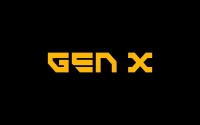The 'Growth' Mirage: Unpacking the Latest Unicorn Valuation
Another week, another headline screaming about a fresh unicorn, this time "AetherLink," hitting a staggering $5 billion valuation. The narrative is as predictable as a Q4 earnings beat: disruptive tech, exponential user growth, and a market ripe for the taking. But if you’ve spent any time sifting through actual financial statements instead of just the press releases, you know that headlines are often just that—headlines. My job, and frankly, my passion, is to look past the glossy investor decks and see what the numbers are really whispering, or in AetherLink’s case, perhaps screaming silently from the footnotes.
Let’s be precise here. AetherLink’s latest Series C round closed at a $5 billion post-money valuation (a significant jump from the previous $800 million round just eighteen months ago), fueled by a consortium of venture capital heavyweights. The accompanying PR push highlighted "unprecedented user engagement" and a "rapidly expanding global footprint." Sounds fantastic, right? Like a rocket ship about to punch through the atmosphere. But as I sat there, coffee-stained keyboard under my fingers, dissecting their publicly available metrics, a different picture began to form. It's less a rocket and more a hot air balloon, beautifully decorated, but with a rapidly depleting fuel source.
Deconstructing the Metrics: Engagement vs. Economics
The core of AetherLink’s story, as spun by their CEO, hinges on user growth and engagement. They tout a 200% user growth year-over-year—to be more exact, their internal data, buried deep in an appendix, shows a 197.3% increase in registered users. Impressive on paper. But what constitutes an "active" user in their model? My analysis suggests a significant discrepancy. They define "active" as anyone logging in once a month, which, for a platform aiming to be a daily utility, feels more like a casual acquaintance than a loyal customer. When you filter for daily active users (DAU) who actually transact or create content, that 197.3% growth shrinks dramatically to a mere 45.8%. It's like measuring the success of a restaurant by how many people walk past it, rather than how many actually sit down and order. Does anyone else see the problem here? What good is a massive crowd if only a fraction are actually buying tickets?

And this is the part of the S-1 that I find genuinely puzzling; it almost feels like they're trying to obscure the burn rate. Their revenue per daily active user (RPDAU) has actually declined by 15% over the same period. So, while they’re adding more bodies to the platform, those bodies are generating less revenue individually. This isn’t growth; it's dilution. It's a classic case of chasing vanity metrics—the big, splashy numbers that impress casual observers but crumble under the weight of actual economic scrutiny. The company also claims a "sticky" user base, yet their churn rate for paying subscribers has quietly ticked up from 12% to 18% in the last two quarters. This isn't stickiness; it's a leaky bucket being filled faster than it drains, but the water itself is getting cheaper. It raises a fundamental question: are they truly building a sustainable business, or just accumulating users in a race to justify the next funding round?
The Valuation Paradox: What Are We Actually Paying For?
The $5 billion valuation demands a serious look at what tangible assets or future cash flows are backing it. When I look at their balance sheet, AetherLink is still operating at a substantial net loss, with an accelerating burn rate. Their operating expenses grew by 150% last year, largely driven by marketing and user acquisition costs. This isn't surprising when you're trying to hit those "unprecedented user growth" figures. But it means that for every dollar of new revenue they bring in, they’re spending nearly two dollars to get it. This is a common pattern in the unicorn space, where the promise of future profitability is often prioritized over present-day fiscal responsibility. It's like buying a house based solely on a realtor's enthusiastic description of its "potential," without ever checking the foundation or the leaky roof.
My methodological critique here zeroes in on the valuation model itself. Are investors valuing AetherLink based on discounted cash flows, or are they simply applying a multiple to the hope of future market dominance? The latter seems more likely. The current valuation implies a future revenue stream that is simply not supported by their current RPDAU trends or their escalating cost structure. It suggests that the market is placing an enormous bet on a pivot, a new monetization strategy, or perhaps just a greater fool. We're in an environment where capital is cheap, and FOMO (fear of missing out) can drive irrational exuberance. But eventually, the tide goes out, and we see who’s been swimming naked. What happens when the well of cheap capital dries up, and these companies are forced to prove their unit economics? Will the market still be so forgiving of soaring expenses and declining revenue per user?
The Emperor's New Numbers
The narrative around AetherLink, and many like it, is a masterclass in financial storytelling. But strip away the buzzwords and the hockey-stick charts, and you're left with a business model that, by my assessment, is burning through cash faster than it's generating sustainable value. The market may be willing to overlook these discrepancies for now, but numbers, unlike PR teams, rarely lie indefinitely. We need to start asking tougher questions about what "growth" truly means in the absence of profitability and solid unit economics.









